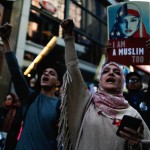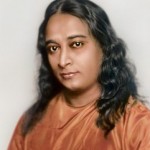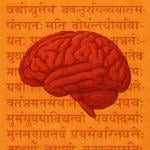Be it India or America, as the great Hindu monk Swami Vivekananda said, “The best thermometer to the progress of a nation is its treatment of its women.”
There are few events in history that can wake up an entire nation out of complacency. The horrific rape and resulting death of the 23-year-old woman in Delhi has been such an event. As frustrated and saddened as I am over the violence and violation so many women have faced, I am encouraged that both men and women have taken to the streets of India over this incident. As a Hindu American of Indian origin, I also have questions: How can I ensure that people understand that this incident does not stem from Hindu beliefs about women, nor is it sanctioned by the Hindu tradition? And how can I impact violence against women, and should my focus be on India, or where I live, in America?
To address the first issue, I would first refer people to the Hindu scriptures, where the very word for strength and power is feminine: shakti. Other feminine words include peaceshanti, education vidya, wisdom buddhi, and wealth lakshmi, and are commonly used as names for girls. Hindus envision the Divine as feminine: God is often depicted and worshipped as a female (such as the Goddess Saraswati). Hindus use stories to teach moral values, and in many of these, mighty empires were destroyed because a single woman was wronged by their king or state. For example, in the epic the Ramayana (the story of Rama), Ravana, the King of Lanka, and his entire clan were wiped out because he abducted Sita, the wife of Rama. In another epic, the Mahabharatha, the Kaurava family was killed because they humiliated the wife of their Pandava cousins, Draupadi, by attempting to disrobe her in public. One of my favorite stories is that of Satyabhama, who not only encouraged her husband to wage war on the demon king Narakasura because of his ill treatment of women (among many other terrible deeds), but actually helped him kill Narakasura.
In Vedic times, women and men were equals in both religious and educational realms; women participated in public rituals alongside men. Even today, married couples are required to do most religious rituals together. One scriptural text mentions a female rishi,or saint, Visvara; another text, the Haritasmrti, speaks of brahmavadinis who remained unmarried and spent their lives in study and ritual. Vedic hymns are attributed to women such as Apala, Gargi, Maitreyi. Gargi was a participant in the world’s first conference on philosophy and had a famous debate with Yajnavalkya, who is credited with authoring theBrihadaranyaka Upanishad (among other things). Maitreyi was married to Yajnavalkya, and her exchange with him on the Absolute Self and immortality is a fascinating one.
Panini, the great Sanskrit grammarian, made a distinction between acharya (a lady teacher) and acharyani (a teacher’s wife), and upadhyaya (a woman preceptor) andupadhyayani (a preceptor’s wife)—indicating that women were scholars. In early Vedic times, women also received the sacred thread and studied the Vedas. The most ancient Hindu scripture, the Rig Veda, refers to women engaged in warfare (Satyabhama’s story came later).
To address modern times, a growing number of talented women directors have “ventured into topics that were formerly taboo, filming gender violence, bonded labor, dowry deaths and domestic abuse,” as reported a number of years ago by Hinduism Today. Such work helps to bring religious ideals into better practice. Indian-American writers such as Chitra Divakaruni have also addressed the issues that women of Indian origin face. Divakaruni’s heroines usually are trying to “find themselves” within the constraining boundaries of their cultures and religions: “My characters struggle in the balance between family responsibility and individual happiness, which is, in a way, at the center of the conflict between our Hindu culture, which always shows the mother as the giver, as the nurturer, and as sacrificing herself for the good of the family, and the Western concept of self-happiness.” Divakaruni also credits her Hindu ideals for her strong women characters: “I was brought up to think that women can do anything that they want, that women are successful. They are powerful guiding forces in the family and outside the family.” Not surprising since Divakaruni is Bengali, an ethnic group where the Mother Goddess is of prime importance.
Hopefully, understanding Hindu and Hindu American ideals will discount the misconceptions and stereotypes that people may have based on the media blitz about the Delhi rape case. However, I agree with what one of my South Asian women writer friends said, that we Indian-Americans and Indians who live abroad are not really in a position to do a whole lot about the Delhi incident. This is something that deeply affects women—and men—who live in India, and they are the ones who should be taking the lead.
While I feel a strong sense of frustration and would do anything possible to enable change in India, I am focusing on what I can do to help women closer to home. Even in the U.S., there are women’s rights issues that need attention. Consider that the U.S. Violence Against Women Act, which used to help victims of domestic violence, has expired. Originally passed in 1994, this federal legislation offered a comprehensive approach to violence against women. It combined tough provisions to hold offenders accountable with programs to provide services for the victims of such violence. As an advocate for human rights and as a Hindu woman, it disturbs me that American policy makers are unable to find common ground and pass legislation to help American women.
Be it India or America, as the great Hindu monk Swami Vivekananda said, “The best thermometer to the progress of a nation is its treatment of its women.”















